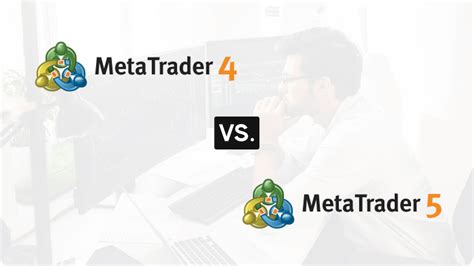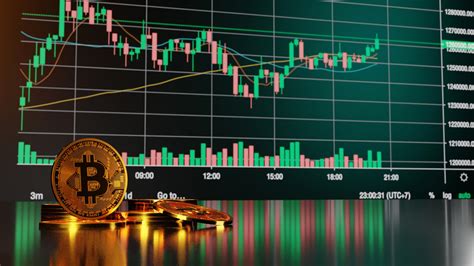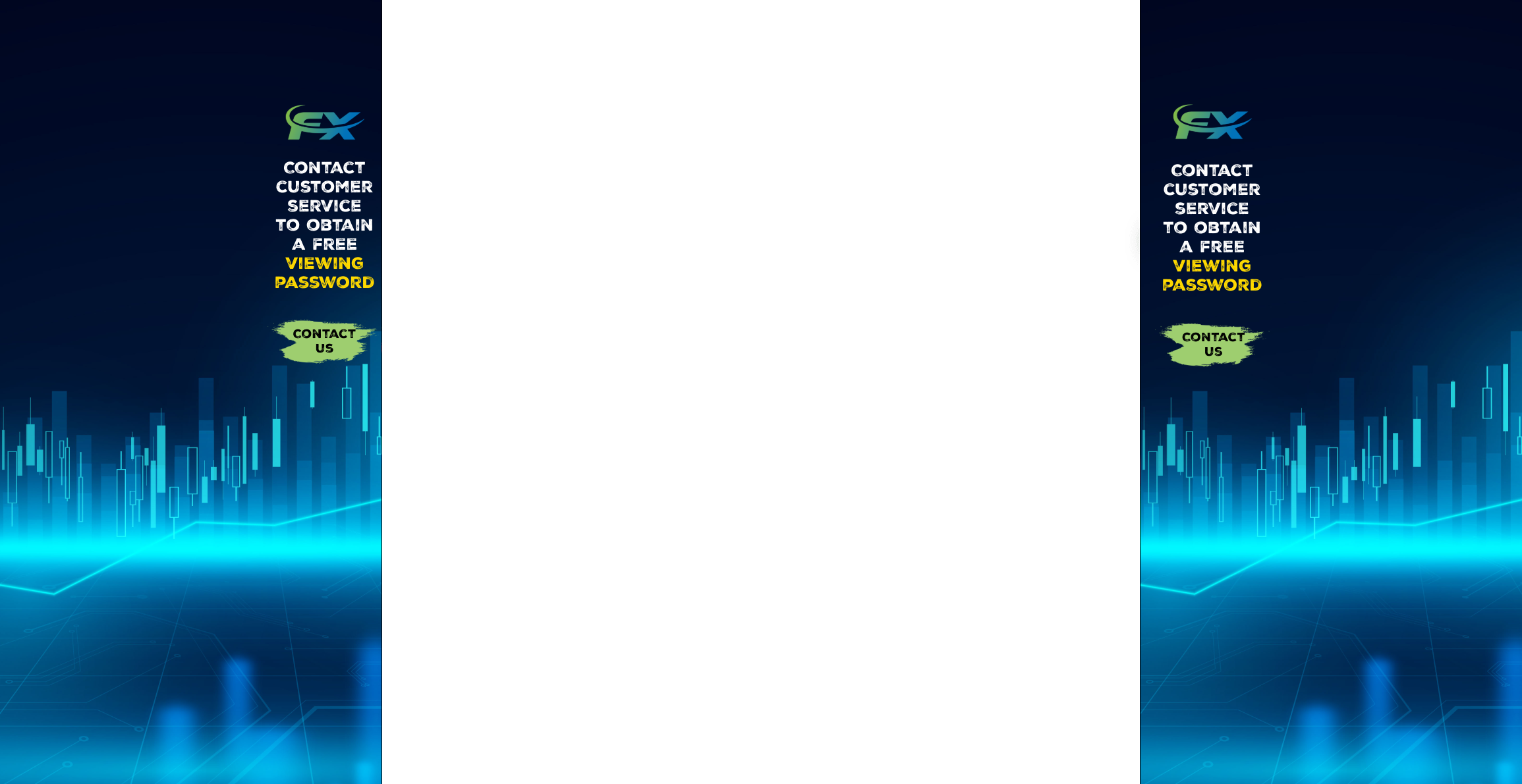Entering the world of financial markets presents both opportunities and challenges for those looking to build wealth through currency trading. Forex trading attracts beginners seeking profit potential, but success depends on understanding key market principles, risk management, and strategic decision-making. Volatility, liquidity, and economic factors shape price movements, requiring traders to develop skills that go beyond speculation. Learning how to analyze trends, use trading platforms effectively, and manage capital wisely plays a crucial role in long-term profitability. Adopting a structured approach helps new traders navigate fluctuations and avoid common pitfalls that can lead to unnecessary losses.
Understanding Forex Market Dynamics
Market fluctuations are influenced by various factors, making knowledge of forex dynamics essential for traders aiming for profitability. Forex trading involves analyzing currency movements, economic trends, and liquidity conditions that impact decision-making. Grasping these core elements builds a strong foundation for executing trades effectively.
Currency Pairs and Market Liquidity
Major pairs such as EURUSD, USDJPY, and GBPUSD have high liquidity due to significant trading volume, reducing spreads and execution risks.
Minor pairs like EURGBP and GBPJPY offer trading opportunities but may have higher volatility and wider spreads.
Exotic pairs involving currencies from emerging markets experience lower liquidity, increasing price fluctuations and potential slippage.
Liquidity impacts trade execution, making MetaTrader 4 and cTrader preferred platforms for traders who require real-time access to market depth.
Market conditions shift based on institutional participation, with futures and spot transactions influencing price stability.

Role of Economic Indicators in Price Movements
Economic data releases shape forex price action, requiring traders to monitor key indicators that influence supply and demand.
| Economic Indicator | Impact on Forex Market | Example |
|---|---|---|
| Interest Rate Decisions | Higher rates strengthen currency value | Federal Reserve raising USD interest rates strengthens USDCAD |
| Inflation Reports | Rising inflation may weaken a currency | High CPI in the UK can pressure GBPUSD lower |
| Employment Data | Strong job growth supports currency gains | NFP report exceeding expectations boosts USDJPY |
| GDP Growth Rates | Expanding economies attract forex investors | Positive EU GDP figures may strengthen EURJPY |
| Trade Balance Data | Surpluses boost currency demand | A rising Japanese trade surplus supports JPY against major counterparts |
How Supply and Demand Affect Exchange Rates
Market behavior reflects shifts in supply and demand, driven by various factors:
Central Bank Policies – Interest rate adjustments from institutions like the Federal Reserve or European Central Bank alter investor sentiment and capital flows.
Market Sentiment – Traders using Bollinger Bands and Relative Strength Index (RSI) identify overbought or oversold conditions that influence speculative activity.
Geopolitical Events – Elections, trade agreements, and economic sanctions impact currency strength and volatility.
Institutional Order Flow – Large transactions executed through limit orders and market orders drive price momentum in major pairs like EURUSD and USDJPY.
Timeframes and Market Behavior
Traders utilize different timeframes to align strategies with market conditions.
M1, M5, and M15 cater to high-frequency traders and scalpers, capturing short-term price movements using Stochastic Oscillator and Ichimoku Cloud indicators.
H1 and H4 are preferred for day traders analyzing market trends and seeking confluence between technical levels.
D1, W1, and MN support swing traders and investors focused on long-term macroeconomic trends affecting forex trading.
The selection of timeframes depends on volatility levels and the trader’s ability to manage risk reward ratio effectively.
The Psychology of Market Participants
Market behavior reflects the psychology of different participants, shaping price trends and liquidity shifts.
Retail Traders – Often influenced by emotions, they engage in high-leverage positions on platforms like MetaTrader 5, frequently using stop-loss and take-profit orders.
Institutional Investors – Hedge funds and banks deploy algorithmic trading, adjusting position sizing based on market depth and macroeconomic outlooks.
Central Banks – Intervene in currency markets through monetary policy adjustments, dictating long-term trends in pairs like USDJPY and EURGBP.
High-Frequency Traders – Operate on M1 and M5 charts, using automated systems to capitalize on short-term fluctuations with minimal margin exposure.
Understanding how different market participants influence forex trading enhances decision-making and strategy formulation, increasing the likelihood of long-term profitability.
Trading Strategies for Beginners
Success in forex trading depends on adopting the right approach to price movements. Different strategies cater to various market conditions, timeframes, and trader preferences. Understanding key methods such as trend following, breakout trading, and scalping allows beginners to build structured plans while minimizing unnecessary risks.
Trend Following vs. Counter-Trend Trading
Trend Following
Uses Moving Average, MACD, and Ichimoku Cloud to identify directional momentum.
Traders enter positions in the direction of the prevailing trend, reducing uncertainty.
Works best on H4, D1, and W1 charts where major trends develop.
Counter-Trend Trading
Seeks reversal opportunities using Relative Strength Index (RSI) and Bollinger Bands.
Identifies overbought and oversold conditions for potential price corrections.
Requires strict risk-reward ratios to manage unpredictable reversals.
Breakout vs. Range Trading Approaches
Market conditions shift between trending and ranging phases, requiring adaptive strategies.
| Trading Approach | Key Indicators Used | Best Timeframes | Execution Strategy |
|---|---|---|---|
| Breakout Trading | Bollinger Bands, MACD | H1, H4, D1 | Enter trades after price breaks resistance/support with strong volume. |
| Range Trading | Stochastic Oscillator, RSI | M15, M30, H1 | Buy near support, sell near resistance, using Stop-Loss below/above key levels. |
Scalping, Day Trading, and Swing Trading
Traders choose between short-term, intraday, and multi-day trading styles based on risk tolerance and market engagement.
Scalping
Uses M1 and M5 charts with high-frequency trades executed on platforms like MetaTrader 4 and cTrader.
Relies on tight spreads, low latency execution, and minimal slippage for quick profits.
Requires a disciplined exit strategy with small Stop-Loss and Take-Profit targets.
Day Trading
Focuses on H1 and H4 charts, capturing trends within a single session.
Trades are closed before the market closes to avoid overnight risks.
Requires monitoring economic indicators like interest rate decisions for short-term price impact.
Swing Trading
Trades held for days or weeks using D1 and W1 charts.
Utilizes Fibonacci Retracement and MACD for identifying medium-term opportunities.
Aims for higher returns while maintaining risk management through controlled position sizing.
Using Fibonacci Retracement for Entry and Exit
Applying Fibonacci Retracement enhances trade accuracy by identifying potential pullback levels in trending markets.
Step 1: Identify the trend direction on H1, H4, or D1 charts.
Step 2: Draw Fibonacci levels from swing high to swing low in an uptrend, or vice versa in a downtrend.
Step 3: Wait for price retracements to key levels like 38.2%, 50%, and 61.8% before entering trades.
Step 4: Place Stop-Loss below the previous swing low (for long trades) or above the swing high (for short trades).
Step 5: Use Take-Profit at 127.2% or 161.8% Fibonacci extensions to maximize gains.
Building a solid trading strategy requires adapting to market conditions while maintaining discipline. Using structured approaches such as trend following, scalping, and Fibonacci-based trading helps beginners refine their decision-making process and increase forex trading success.
The Role of Trading Platforms and Tools
Selecting the right platform enhances execution speed, strategy deployment, and market analysis for forex trading. Advanced tools support traders in implementing strategies, automating trades, and optimizing performance. Platforms like MetaTrader 4, cTrader, and TradingView offer different features suited to various trading styles.

Choosing Between MetaTrader 4 and MetaTrader 5
MetaTrader 4 (MT4)
Designed primarily for spot forex trading with a user-friendly interface.
Supports market orders, limit orders, and custom indicators like Moving Average and MACD.
Compatible with most brokers, making it widely accessible.
MetaTrader 5 (MT5)
Offers additional order types, such as stop-limit orders, increasing flexibility.
Provides market depth analysis, enhancing decision-making for futures and CFD trading.
Supports a more advanced algorithmic trading environment for automated execution.
The Advantages of cTrader for ECN Trading
Direct access to ECN liquidity providers, reducing spreads and improving execution speed.
No dealing desk interference, minimizing conflicts of interest between traders and brokers.
Advanced risk management tools allow precise stop-loss and take-profit adjustments.
Depth of market (DOM) display helps traders assess real-time liquidity conditions.
Using TradingView for Market Analysis
Comprehensive charting and social features support technical analysis and strategy refinement.
| Feature | Benefit | Use Case in Forex |
|---|---|---|
| Multi-timeframe Analysis | Helps traders analyze M1 to MN charts | Scalpers use M1, while investors prefer D1 |
| Custom Indicators | Users can create scripts using Pine Script | Modifying RSI, MACD, and Ichimoku Cloud |
| Community Trade Ideas | Shared strategies improve decision-making | Reviewing setups on EURUSD, USDJPY |
| Cloud-based Trading | Access from any device without software installation | Monitoring trades from mobile while away from desktop |
Automating Strategies with Expert Advisors
Algorithmic trading removes emotional bias, enabling systematic execution.
Step 1: Develop or download an Expert Advisor (EA) compatible with MetaTrader 5.
Step 2: Define entry conditions based on Moving Average, Stochastic Oscillator, or price action rules.
Step 3: Optimize risk parameters, including position sizing, margin, and risk-reward ratio.
Step 4: Backtest strategies using historical data to refine performance.
Step 5: Deploy on a demo account before live trading to minimize risks.
Customizing Indicators for Personalized Trading
Ichimoku Cloud – Adjust settings to filter noise for D1 and W1 trades.
Bollinger Bands – Modify deviations to better capture volatility in GBPUSD and EURJPY.
Relative Strength Index (RSI) – Use different thresholds to detect overbought or oversold conditions in high-liquidity pairs like USDJPY.
Backtesting and Optimization for Strategy Validation
Validating a strategy before live trading prevents unnecessary losses. Backtesting on platforms like MetaTrader 4 ensures a trading plan aligns with historical data. Traders analyze performance across multiple timeframes, refining entry and exit rules based on real market conditions.
Trading platforms serve as the foundation for executing strategies, optimizing risk management, and improving market insights. Leveraging automation, custom indicators, and historical data analysis ensures higher accuracy and efficiency in forex trading.

Risk Management and Capital Protection
Protecting capital is essential for long-term profitability in forex trading. Strategies such as stop-loss placement, position sizing, and risk-reward ratio optimization help traders reduce unnecessary losses. Managing exposure effectively allows traders to navigate market volatility while safeguarding investments.
The Importance of Stop Loss and Take Profit
Stop Loss (SL): Automatically exits a trade when a predefined loss level is reached, preventing excessive drawdowns.
Take Profit (TP): Ensures that profits are locked in before the market reverses, preventing missed opportunities.
Trailing Stop: Adjusts the stop-loss level dynamically as the price moves favorably, securing gains while allowing the trade to run.
Timeframe Considerations: Short-term traders using M5 and M15 require tighter SL and TP, while long-term traders on D1 and W1 can use wider stops.
Risk-Adjusted Execution: Combining SL and TP with indicators such as Fibonacci Retracement and Relative Strength Index (RSI) helps improve precision.
Position Sizing and Leverage Considerations
Determining the right trade size based on account balance and margin requirements is crucial for survival in the market.
| Factor | Impact on Position Sizing | Example in Forex Trading |
|---|---|---|
| Leverage | Higher leverage increases exposure but also risk. | A trader using 1:500 leverage can control a larger EURUSD position with minimal capital. |
| Risk Percentage | Allocating only a small portion of capital per trade prevents large drawdowns. | A trader risking 2% of an account per trade avoids complete depletion from a losing streak. |
| Lot Size Selection | Larger lot sizes amplify gains but also magnify losses. | A 1.0 standard lot on GBPJPY moves significantly compared to a 0.1 mini lot. |
| Account Equity | Position sizes should be adjusted based on available funds. | A trader with $10,000 should not risk the same lot size as a trader with $1,000. |
The Risk-Reward Ratio and Its Significance
Trading with a structured risk-reward ratio ensures that profitable trades outweigh losses over time.
Step 1: Define risk per trade by determining the percentage of capital to be allocated.
Step 2: Set stop-loss at a logical technical level, ensuring it is not placed too close or too far from entry.
Step 3: Identify take-profit targets using Fibonacci extensions, support/resistance zones, or volatility-based calculations.
Step 4: Ensure the reward is at least twice the risk (2:1 ratio) for sustainable long-term trading.
Step 5: Maintain consistency in risk management across different market conditions, avoiding emotional decision-making.
Applying structured risk management principles prevents overexposure and enhances trading consistency. Integrating position sizing, stop-loss strategies, and reward optimization ensures traders can sustain profitability while navigating market fluctuations.
Market Analysis: Technical vs. Fundamental Approaches
Analyzing price movements is critical for success in forex trading. Traders rely on both technical analysis and fundamental analysis to understand market trends, anticipate price shifts, and refine trading strategies. Identifying moving averages, RSI signals, and central bank decisions helps traders make informed trading decisions.
How Moving Averages Predict Market Trends
Simple Moving Average (SMA): Averages price data over a set period, smoothing fluctuations in EURUSD and USDJPY price movements.
Exponential Moving Average (EMA): Gives more weight to recent data, reacting faster to price changes on M1, M5, and H1 timeframes.
Golden Cross & Death Cross: A 50-period SMA crossing a 200-period SMA signals a potential uptrend or downtrend in GBPUSD.
Combining Indicators: Used with MACD and Ichimoku Cloud to confirm trend strength before placing a market order or limit order.
Relative Strength Index and Momentum Analysis
Momentum indicators identify overbought and oversold conditions, helping traders time entries and exits.
| Indicator | Purpose | Optimal Usage |
|---|---|---|
| RSI | Measures price momentum | Buy below 30, sell above 70 on D1 charts. |
| MACD | Detects trend strength | Used on H4 and D1 for swing trading. |
| Stochastic Oscillator | Identifies potential reversals | Best on M15, M30 for short-term trades. |
| Bollinger Bands | Confirms volatility levels | Expands during high volatility, contracts during low volatility. |
Impact of Central Banks and Interest Rate Decisions
Economic policies from institutions like the Federal Reserve, European Central Bank (ECB), and Bank of Japan dictate currency fluctuations.
Rate Hikes Strengthen a Currency – Higher interest rates attract investors, boosting demand for USDJPY and EURUSD.
Rate Cuts Weaken a Currency – Lower rates decrease yields, making GBPUSD and NZDUSD less attractive to investors.
Quantitative Easing (QE) Policies – Inject liquidity into markets, influencing the value of USDCHF and EURGBP.
Market Speculation Before Announcements – Price movements often anticipate non-farm payrolls (NFP) and CPI data, increasing volatility.

Combining Technical and Fundamental Approaches
Using a mixed approach enhances accuracy in forex trading decisions.
Step 1: Identify macroeconomic trends by analyzing interest rates, GDP growth, and inflation reports.
Step 2: Confirm trends using moving averages, Fibonacci retracement, and RSI for precise entries.
Step 3: Monitor market sentiment by tracking trading platforms like TradingView for trader positioning.
Step 4: Execute trades on MetaTrader 4 or cTrader, adjusting risk parameters like stop-loss and position sizing.
Combining technical and fundamental analysis refines decision-making, allowing traders to capitalize on short-term and long-term trends effectively.
Common Pitfalls and Psychological Challenges for Beginners
Psychological barriers often lead to mistakes in forex trading, affecting profitability and consistency. Emotional trading, cognitive biases, and a lack of discipline can result in poor decisions. Recognizing these challenges and adopting structured strategies helps traders avoid unnecessary losses and improve long-term success.
The Dangers of Overtrading and Emotional Decision-Making
Fear of Missing Out (FOMO): Traders often chase market movements without proper analysis, leading to forced entries on EURUSD and USDJPY.
Revenge Trading: After a loss, emotional responses drive traders to place larger, impulsive trades to recover quickly.
Lack of a Defined Strategy: Without predefined rules, traders shift between scalping, day trading, and swing trading, leading to inconsistency.
Ignoring Risk Limits: Overleveraging and not setting stop-loss orders on MetaTrader 4 or cTrader increases exposure to market fluctuations.
Solution: Sticking to a structured trading plan, incorporating position sizing, and maintaining emotional control minimizes overtrading risks.
How Confirmation Bias Affects Trade Execution
Cognitive biases influence decision-making, often causing traders to favor information that aligns with their pre-existing beliefs.
| Cognitive Bias | Impact on Trading | Example in Forex |
|---|---|---|
| Confirmation Bias | Traders ignore signals that contradict their market outlook. | A trader bullish on GBPUSD dismisses bearish indicators like MACD crossover. |
| Anchoring Bias | Traders fixate on a past price, expecting the market to return. | A trader refuses to exit a losing EURJPY position despite continuous downtrend. |
| Loss Aversion | Holding onto losing trades longer than winning ones. | A trader lets NZDUSD run deep into losses but closes profitable trades too early. |
| Herd Mentality | Following market sentiment blindly without independent analysis. | Entering USDCAD trades solely because others are buying. |
Developing a Disciplined Trading Routine
Maintaining a structured routine ensures consistency in forex trading, preventing emotional decisions.
Step 1: Set clear entry and exit criteria based on indicators like Bollinger Bands, RSI, and Ichimoku Cloud.
Step 2: Define daily risk exposure, ensuring no trade exceeds a 2% account risk limit.
Step 3: Execute trades only during peak market hours when liquidity is highest on EURUSD and GBPJPY.
Step 4: Use TradingView for pre-market analysis, identifying potential trade setups before placing a market order.
Step 5: Maintain a trading journal on platforms like MetaTrader 5, tracking performance and refining strategy.
Recognizing psychological pitfalls and applying risk management techniques improves decision-making. A structured trading plan, combined with technical and fundamental analysis, helps traders avoid emotional mistakes and trade with confidence.

Conclusion
Mastering forex trading as a beginner requires more than just placing trades based on speculation. Understanding market dynamics, choosing the right currency pairs, implementing risk management strategies, and using advanced trading platforms contribute to long-term success. Learning to analyze both technical and fundamental aspects ensures informed decision-making, helping traders adapt to shifting market conditions. Developing a disciplined mindset prevents common pitfalls such as overtrading and emotional decision-making, allowing for sustainable growth. Profitability is possible for those who take the time to refine their strategies, manage risks effectively, and build confidence through experience in the ever-evolving forex market.
EURUSD, USDJPY, and GBPUSD are widely traded, offering high liquidity and lower spreads.
Major currency pairs are easier to analyze due to the availability of economic data and news.
Spot trading allows immediate execution based on market prices.
Futures contracts provide opportunities for longer-term speculation.
Options trading offers flexibility in managing potential gains and losses.
Advanced traders often prefer MetaTrader 4 or TradingView due to extensive charting tools, indicator customization, and automated trading capabilities.
Using stop-loss orders prevents excessive drawdowns.
Proper position sizing limits exposure based on account balance.
Maintaining a favorable risk-reward ratio ensures long-term profitability.
Indicators such as the Relative Strength Index (RSI) and Moving Averages help traders identify trends, momentum shifts, and potential entry or exit points. Combining multiple indicators enhances accuracy in decision-making.







